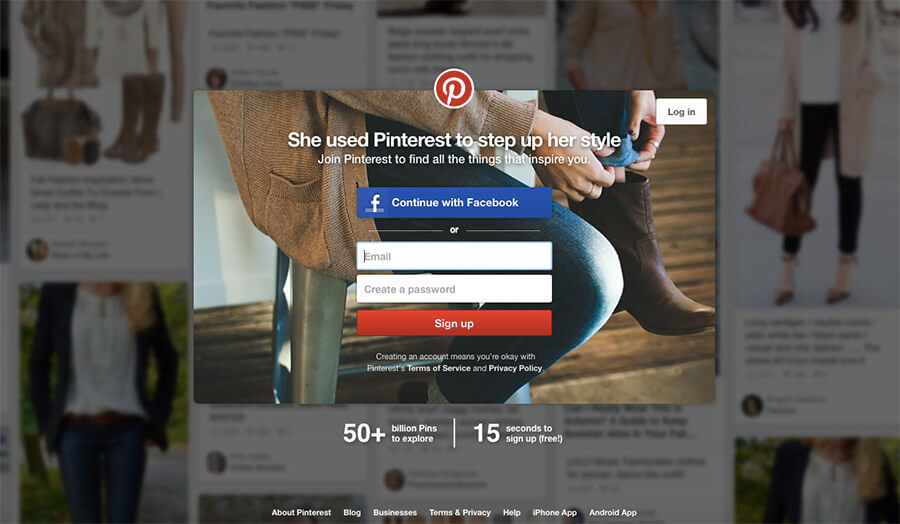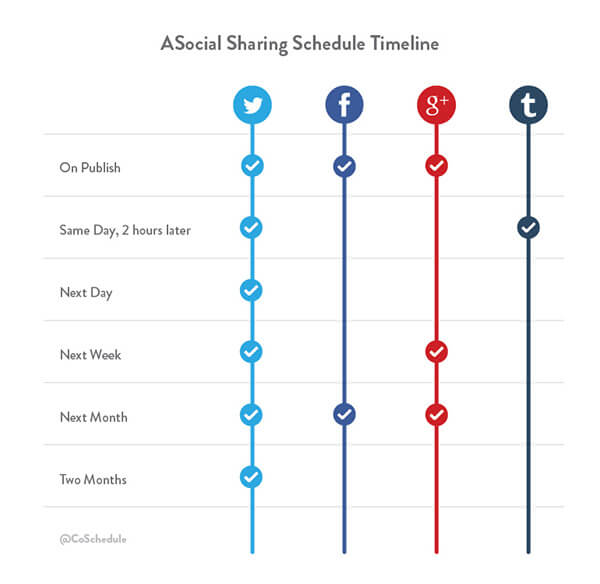If you still think that social media sites like Facebook and Instagram were created for teenagers, you might be missing out on some of the best marketing tools in the photography industry. Social media gives photographers a huge opportunity to grow sales, especially for a visual-based business like photography.
Photo by Startup Stock Photos

If you are thinking about starting your own social media campaign, in this post you’ll find a few things you need to know before getting started. Learning to engage on various social media sites takes many hours of practice so you need to make sure you implement the right strategies from the very beginning.
1. Study the Specifics of Each Major Network
Photography is a visual-based business, so you need to be focusing on images.
As one of the most used social media platforms on the web, Facebook’s more than 1.44 billion monthly global users spend an average of 20+ minutes per day on the site; liking, commenting, and scrolling through status updates, according to analysts from Needham. In other words, Facebook is a great channel for building and interacting with your clients, as well as advertising your photography brand to your target audience.

This mobile photo-sharing app has over 300 million active users per month. According to Econsultancy, the average post engagement rate on Instagram is over 300% the rate of Twitter. No surprise here, as images are to consume than text, and apart from that, liking content on Instagram is easier than retweeting. With this level of user activity and the platform to post loads of impressive pics, not using Instagram to promote your photography is the biggest mistake you can make.

Perhaps the most important fact about Pinterest you need to know is that over 81% of its users are female. Survey your female clients, analyze your competitor’s activity on Pinterest and produce content that will cause the most buzz on this particular network.
Google+

It’s a known fact that Google often incorporates their other products into the search results pages, and Google+ posts are no exception. However, this does not mean that your content will rank high in Google just because you shared it on G+. High-quality, relevant information is the key here. Google+ has been successfully utilized by photographers such as Trey Ratcliff, Viktor Elizarov, Jeremy Cowart and others. Spend some time analyzing the types of posts, hashtags, and comments they are sharing, and apply your findings in your own G+ feed.

While Twitter may seem a less applicable network for a photographer since its main asset is text, don’t be fooled by this assumption. According to Social Times, over a third (37%) of global Twitter users (that’s over 270 million people!) will buy from a brand they follow. By deciding on your main goal for Twitter (personal, or business, or both) scheduling your tweets and organizing your follower base, you can reach remarkable traffic volumes and engagement rates with Twitter.
To find out more about how to utilize major social networks for your photography business, download this free printable Social Media Checklist for photographers.
2. Take Care of Your Profiles
You need to consider how much time per day you need to spend on social media sites after you choose the networks you’re going to use.
The next step is to fill out all the information and images which each of these social media profiles require. In this social media image size cheat sheet 2015 you’ll find all the image sizes you may require.
A complete profile shows your followers that you are a professional and you value their interest.
Also remember that a good bio sells. Writing strong and detailed bios on various social media sites tells your followers who you are and what you do. This will tell your followers what to expect from you. Try to keep your bios short but exciting, accurate and intriguing.
3. Pick Your Posting Strategy
So, after you have completed your social media profiles, you still have many other things to figure out: what should I post, when should I post, how often should I post and so on. So, let’s figure it out.
The best social media strategy is to focus on high-quality content, posting at the right time and at the right frequency.
When it comes to the content you should be posting – images are the perfect choice. Not just because you’re a photographer, but because they really engage people more. According to the statistics on Twitter’s blog, photos average a 35% boost in retweets, videos get a 28% boost, quotes get a 19% boost in retweets, and hashtags receive a 16% boost. Images grab attention, so consider it when posting something new on your social media.
Start sharing the five main types of posts: links, images, quotes, updates and re-shares. It is not necessary to copy and paste the same post on all your social media sites. Try to find a unique way of posting through your networks’ culture and language.
So, how often should you be posting?
This all depends on your target audience, resources and the quality of your updates. There have been a lot of articles written on this topic and a good rule of thumb on the number of posts are:
- Facebook: 1-2 per day;
- Twitter: 5 or more per day;
- LinkedIn: 1 per day;
- Pinterest: 5 or more per day;
- Instagram: 2 or more per day.
Research has also been done on the best time to share updates. According to SumAll, a cross-platform marketing analytics tool, the perfect social media timing looks like this:
To recap:
- Twitter: 1-3pm weekdays
- Facebook: 1-4pm and 2-5pm weekdays
- LinkedIn: 7-8:30am and 5-6pm Tuesday, Wednesday, and Thursday
- Tumblr: 7-10pm weekdays and 4pm on Fridays
- Instagram: 5-6pm weekdays and 8pm on Mondays with a sweet spot at 6pm
- Pinterest: 2-4pm and 8-11pm weekdays with weekends being the best
- Google+: 9-11am weekdays
The main thing is to keep your updates consistent, but not too invasive. It’s all about communicating with your audience and sharing content that may be useful and interesting to them.
4. Analyze and Test
The following are just tips to help you, not prescriptions. With the content you share you will see what content, timing and frequency is the best for you.
Before searching for some analytics tools, try to understand the statistics each social media site provides. As a rule, they can show you the number of clicks, shares, likes, and comments you get on each update. Also, Google Analytics can show you how many referrals you receive and the number of people that visit your various social media profiles.
Don’t be afraid to test something new and experiment with timing and content.
5. Automate and Engage
Owning a photography business will make you a wearer of many hats, but you should never lose an opportunity to take photos or do other personal things. Since social media sites may take too much of your time, there are some useful tools that were created to automate your tasks. In this way, you don’t have to be afraid that the day you’re out of town for a new photo shoot your followers will get no updates. Automation is your weapon for constantly sharing on social media day after day..
I use Buffer to automate my updates on Twitter, Facebook and Google Plus. I found a perfect social media schedule timeline that works well for me:
By using this timeline, I add my new post to Buffer, and it appears on Twitter, Facebook and G+ at a desired frequency.
Hootsuite is also one of the leading automation tools. You can schedule your posts and see the statistics of your posts.
A growing free platform for photographers, Defrozo, has recently introduced their social automation tool as well. Once a new page on your portfolio or a new blog post appears, you can set the new content to be automatically shared to Facebook (and more networks to follow shortly).
Don’t be afraid to share your content multiple times. Each time you may attract new followers.
More Social Media Secrets?
I hope these tips on how to get started with social media for your photography business will come in handy.
Don’t forget to grab the photographer’s free checklist summing up some of the best practices for creating an effective social media workflow.
What are your social media secrets? What would you advise a person who has just started a social media campaign to do? What are the things you wish you knew about social media? Don’t hesitate to use the comment field below to share your thoughts.


